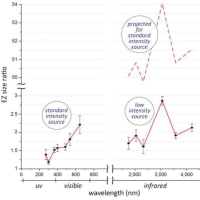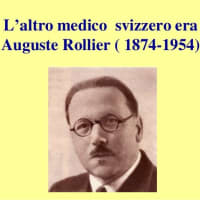6ハリー・ヘミラ論文 ビタミンCと感染2017
7.Pneumonia
7.肺炎
Pneumonia is the most common severe infection, which is usually caused by bacteria and viruses.
肺炎は最も一般的な重篤な感染症で、通常は細菌やウイルスによって引き起こされます。
As recounted at the beginning of this review, the association between frank vitamin C deficiency and pneumonia was noted by Alfred Hess and other early authors, when the chemical identity of vitamin C was not yet known.
このレビューの冒頭で詳述したように、ビタミン C の化学的正体がまだ知られていなかったとき、明らかなビタミン C 欠乏症と肺炎との関連性は、アルフレッド・ヘスや他の初期の著者によって指摘されました。
Vitamin C was purified in the early 1930s and soon thereafter a few German and U.S. physicians proposed that vitamin C might be beneficial in the treatment of pneumonia.
ビタミン C は 1930 年代初頭に精製され、その後すぐに数人のドイツと米国の医師がビタミン C が肺炎の治療に有益である可能性を提案しました。
For example, Gander and Niederberger (1936) concluded from a series of 15 cases that “the general condition is always favorably influenced (by vitamin C) to a noticeable extent, as is the convalescence, which proceeds better and more quickly than in cases of pneumonia, which are not treated with vitamin C” [114] and other German physicians also claimed benefits of vitamin C [115,116].
たとえば、Gander と Niederberger (1936) は、一連の 15 件の事例から次のように結論付けています。
「全身状態は(ビタミンCによって)目に見える程度に常に好ましい影響を受けます。
回復期も同様であり、ビタミンCで治療されない肺炎の場合よりも良好かつ迅速に進行する」[114]、他のドイツの医師もビタミンCの利点を主張した[115,116]。
Translations of these papers are available [9].
これらの論文の翻訳は入手可能です [9]。
Case reports from the USA also suggested that vitamin C was beneficial against pneumonia [117,118,119].
米国からの症例報告でも、ビタミンCが肺炎に対して有益であることが示唆されている[117,118,119]。
A Cochrane review on vitamin C and pneumonia identified three controlled trials that reported the number of pneumonia cases in participants who were administered vitamin C and two therapeutic trials in which pneumonia patients were given vitamin C [27,28].
ビタミンCと肺炎に関するコクランレビューでは、ビタミンCを投与された参加者の肺炎症例数を報告した3つの対照試験と、肺炎患者にビタミンCを投与した2つの治療試験を特定した[27,28]。
7.1. Vitamin C and the Incidence of Pneumonia
7.1. ビタミンCと肺炎の発生率
Table 7 shows the findings of the three vitamin C and pneumonia trials. Each of them found a ≥80% lower incidence of pneumonia for their vitamin C group [27,28,120].
表 7 は、ビタミン C と肺炎に関する 3 つの試験の結果を示しています。 彼らはそれぞれ、ビタミンC群では肺炎の発生率が80%以上低いことを発見した[27、28、120]。
Table 7. Effect of vitamin C on the incidence of pneumonia.
表 7. 肺炎の発生率に対するビタミン C の影響
|
勉強 |
肺炎症例数/合計 |
パ _ |
対照群における肺炎の発生率(1/1000人年) |
|
|
ビタミンC |
コントロール |
|||
|
グレーズブルック (1942) [ 97 ] |
0/335 |
17/1100 |
0.006 |
30 |
|
キンバロウスキー (1967) [ 121 ] |
2/114 |
10/112 |
0.022 |
9% b |
|
ピット (1979) [ 122 ] |
1/331 |
7/343 |
0.009 |
120 |
|
選択された集団における肺炎の発生率: |
||||
|
商人 (2004) [ 124 ] |
アメリカの中年男性 |
3 |
||
|
ヘミラ (2004) [ 125 ] |
フィンランドの中年男性 |
5 |
||
|
パッツァリア (1983) [ 126 ] |
アメリカの軍隊新兵 |
60 |
||
|
ペインター (2010) [ 127 ] |
発展途上国の子供たち(最大) |
400 |
||
Modified from Hemilä (2006) [1] (p. 51). a Mid-p (1-tail); combined test for all three sets of data: p = 0.00002 [120]; b 9% of the hospitalized influenza A patients contracted pneumonia.
Hemilä (2006) [1] (p. 51) から変更。 Mid-p (1 テール)。 3 つのデータセットすべての結合テスト: p = 0.00002 [120]; b 入院したインフルエンザ A 患者の 9% が肺炎に罹患しました。
Glazebrook (1942) studied male students (15–20 years) in a boarding school in Scotland during World War II [97].
Glazebrook (1942) は、第二次世界大戦中にスコットランドの寄宿学校の男子生徒 (15 ~ 20 歳) を研究しました [97]。
No formal placebo was used; however, 0.05 to 0.3 g/day of vitamin C was added to the morning cocoa and to an evening glass of milk in the kitchen.
正式なプラセボは使用されませんでした。 ただし、1日あたり0.05~0.3gのビタミンCを、キッチンで朝のココアと夕方のコップ1杯の牛乳に加えました。
Thus, the placebo effect does not seem to be a relevant concern in the dining hall.
したがって、食堂ではプラセボ効果はあまり関係ないようです。
The ordinary diet of the schoolboys contained only 0.015 g/day vitamin C so that their intake was particularly low.
男子生徒の通常の食事にはビタミンCが1日あたり0.015gしか含まれておらず、摂取量は特に低かった。
Kimbarowski (1967) studied the effect of 0.3 g/day of vitamin C on military recruits who had been hospitalized because of influenza type-A in the former Soviet Union [121].
Kimbarowski (1967) は、旧ソ連で A 型インフルエンザにより入院した新兵に対するビタミン C 0.3 g/日の影響を研究しました [121]。
Thus, these pneumonia cases were complications of the viral respiratory infection.
したがって、これらの肺炎の症例はウイルス性呼吸器感染症の合併症でした。
Vitamin C also shortened the mean stay in hospital for pneumonia treatment (9 vs. 12 days).
ビタミンCはまた、肺炎治療のための平均入院日数を短縮しました(9日対12日)。
The latest of the three pneumonia prevention trials was carried out during a two-month recruit training period with U.S. Marine recruits by Pitt (1979) [122].
3つの肺炎予防試験のうち最新のものは、ピットによって米国海兵隊新兵を対象とした2か月の新兵訓練期間中に実施された(1979) [122]。
The dose of vitamin C was 2 g/day. This was a randomized double-blind placebo-controlled trial, whereas the two earlier studies were not.
ビタミンCの投与量は2g/日でした。 これはランダム化二重盲検プラセボ対照試験でしたが、以前の 2 つの研究はそうではありませんでした。
The findings of the three studies are consistent with the notion that the level of vitamin C intake may influence the risk of pneumonia.
3つの研究結果は、ビタミンC摂取量が肺炎のリスクに影響を与える可能性があるという考えと一致している。
However, all the three studies were carried out using special participants under particular conditions, and their findings cannot be generalized to the ordinary current Western population.
しかし、これら 3 つの研究はすべて、特定の条件下で特別な参加者を使用して実施されたものであり、その結果を現在の一般的な西洋人集団に一般化することはできません。
Dietary vitamin C intake was particularly low in the oldest study, and may also have been low in the second study.
食事によるビタミンC摂取量は最も古い研究で特に低く、2番目の研究でも低かった可能性があります。
Thus, the benefit of vitamin C supplementation may be explained by the correction of marginal deficiency in these two older studies.
したがって、ビタミン C 補給の利点は、これら 2 つの古い研究における限界欠乏症の補正によって説明される可能性があります。
However, in the study by Pitt (1979), the baseline plasma level of vitamin C, 57 µmol/L, corresponds to the dietary vitamin C intake of about 0.1 g/day [11].
しかし、Pitt (1979) による研究では、ビタミン C のベースライン血漿レベル 57 μmol/L は、食事によるビタミン C 摂取量 1 日あたり約 0.1 g に相当します [11]。
Furthermore, although the dose of 2 g/day was high, the plasma level of vitamin C increased only by 36% for the vitamin C group.
さらに、2 g/日という用量は多かったにもかかわらず、ビタミン C グループの血漿ビタミン C レベルは 36% しか増加しませんでした。
This also indicates that the basal dietary intake vitamin C was high.
これはまた、基礎食事摂取量のビタミンCが高いことを示しています。
Thus, treating marginal vitamin C deficiency is not a reasonable explanation for that latest study.
したがって、限界ビタミンC欠乏症の治療は、その最新の研究の合理的な説明ではありません。
It is also worth noting that two of these trials used military recruits, and the third used young males who were accommodated in a boarding school [123].
これらの試験のうち 2 件では軍の新兵が使用され、3 件目では寄宿学校に収容されている若い男性が使用されたことも注目に値します [123]。
Therefore, the exposure to viruses and bacteria causing pneumonia may have been much higher compared to children and young adults living at home.
したがって、肺炎を引き起こすウイルスや細菌への曝露量は、自宅で暮らす子供や若者に比べてはるかに高かった可能性があります。
In each of the three trials, the incidence of pneumonia in the control group was very high when compared with the incidence in the ordinary population [124,125].
3つの試験のそれぞれにおいて、対照群における肺炎の発生率は、一般集団における肺炎の発生率と比較して非常に高かった[124,125]。
A high incidence of pneumonia has been reported in military recruits [126], but the incidence of pneumonia has been even higher in some child populations of the developing countries [127] (Table 7).
軍の新兵における肺炎の発生率が高いことが報告されている[126]が、発展途上国の一部の児童集団では肺炎の発生率がさらに高くなっている[127](表7)。
It seems reasonable to consider that these three studies observed a true effect of vitamin C against pneumonia in their specific circumstances.
これら 3 つの研究は、それぞれの特定の状況において肺炎に対するビタミン C の真の効果を観察したと考えるのが合理的と思われます。
However, these findings should not be extrapolated to different circumstances.
ただし、これらの結果をさまざまな状況に当てはめるべきではありません。
It would seem worthwhile to examine the effect of vitamin C in population groups that have a high incidence of pneumonia concomitantly with a low intake of vitamin C [27,41].
ビタミンCの摂取量が少ないと同時に肺炎の発生率が高い集団におけるビタミンCの影響を調べることは価値があると思われる[27,41]。
7.2. Vitamin C in the Treatment of Pneumonia
7.2. 肺炎の治療におけるビタミンC
Two studies have reported on the therapeutic effect of vitamin C for pneumonia patients [27,28].
肺炎患者に対するビタミンCの治療効果について2つの研究が報告されている[27,28]。
Hunt (1994) carried out a randomized, double-blind placebo controlled trial with elderly people in the UK (mean age 81 years), who were hospitalized because of acute bronchitis or pneumonia [26].
Hunt (1994) は、急性気管支炎または肺炎のために入院した英国の高齢者 (平均年齢 81 歳) を対象に、ランダム化二重盲検プラセボ対照試験を実施しました [26]。
The mean plasma vitamin C level at baseline was 23 µmol/L and one third of the patients had a vitamin C level of just ≤11 µmol/L.
ベースライン時の平均血漿ビタミン C レベルは 23 μmol/L で、患者の 3 分の 1 のビタミン C レベルはわずか 11 μmol/L 以下でした。
There was a significant difference in the effect of 0.2 g/day of vitamin C between patients who were more ill and those who were less ill when admitted to the hospital.
入院時に重症だった患者とそれほど重症ではなかった患者の間では、ビタミンC 0.2 g/日の効果に有意な差があった。
Vitamin C reduced the respiratory symptom score in the more ill patients but not in their less ill counterparts.
ビタミンCは、より重篤な患者の呼吸器症状スコアを低下させましたが、より軽症の患者ではそうではありませんでした。
There were also six deaths during the study, all among the more ill participants: five in the placebo group, but only one in the vitamin C group.
研究中には6人が死亡したが、いずれも重篤な参加者であった。プラセボ群では5人だったが、ビタミンC群では1人だけだった。
Mochalkin (1970) examined the effect of vitamin C on pneumonia patients in the former Soviet Union [25].
Mochalkin (1970) は、旧ソ連の肺炎患者に対するビタミン C の効果を調査しました [25]。
Although a placebo was not administered to the control group, two different doses of vitamin C were used and the observed difference between the low and high dosage cannot be explained by the placebo effect.
対照群にはプラセボは投与されなかったが、2種類の異なる用量のビタミンCが使用されたため、低用量と高用量で観察された差はプラセボ効果では説明できない。
The high-dose regime administered on average twice the quantity of vitamin C of the low dose, but both of them were related to the dosage of antibiotics so that the low dose vitamin C ranged from 0.25 to 0.8 g/day, and the high dose ranged from 0.5 to 1.6 g/day.
高用量計画では、低用量の平均2倍の量のビタミンCが投与され、
しかし、どちらも抗生物質の投与量に関連しており、低用量のビタミンCは0.25~0.8g/日の範囲であり、高用量のビタミンCは0.5~1.6g/日の範囲でした。
The duration of hospital stay in the control group (no vitamin C supplementation) was 23.7 days.
対照群(ビタミンC補給なし)の入院期間は23.7日でした。
In the low dose vitamin C group the hospital stay was 19% shorter and in the high dose vitamin C group it was 36% shorter.
低用量ビタミンCグループでは入院期間が19%短縮され、高用量ビタミンCグループでは36%短縮されました。
A benefit was also reported on the normalization of chest X-ray, temperature, and erythrocyte sedimentation rate.
胸部 X 線、体温、赤血球沈降速度の正常化に関する利点も報告されました。
Although both of these therapeutic studies give support to the old case reports stating that vitamin C is beneficial for pneumonia patients, the findings cannot be directly generalized to typical pneumonia patients of Western countries.
これらの治療研究はどちらも、ビタミンCが肺炎患者に有益であるという古い症例報告を裏付けるものではありますが、その結果を西側諸国の典型的な肺炎患者に直接一般化することはできません。
8.Tetanus
8.破傷風
Tetanus is a disease caused by the toxin of Clostridium tetani, which may contaminate wounds.
破傷風は、傷口を汚染する可能性のある破傷風菌の毒素によって引き起こされる病気です。
An early case report claimed that vitamin C was beneficial against tetanus in an unvaccinated six-year-old boy in the USA [128].
初期の症例報告では、米国のワクチン未接種の6歳男児の破傷風に対してビタミンCが有益であると主張した[128]。
A Cochrane review identified one controlled trial in which the effect of vitamin C on tetanus patients was examined [129,130].
コクランのレビューでは、破傷風患者に対するビタミンCの効果を調査した1つの対照試験が特定された[129,130]。
Jahan (1984) studied the effect of 1 g/day of intravenous vitamin C on tetanus patients in Bangladesh [131].
Jahan (1984) は、バングラデシュの破傷風患者に対するビタミン C 1 g/日の静脈内投与の効果を研究しました [131]。
In children aged one to 12 years, there were no deaths in the vitamin C group, whereas there were 23 deaths in the control group (p = 10−9) [1] (p. 17).
1 歳から 12 歳までの小児では、ビタミン C 群では死亡者はいませんでしたが、対照群では 23 名が死亡しました (p = 10−9) [1] (p. 17)。
In tetanus patients aged 13 to 30 years, there were 10 deaths in the vitamin C group compared with 19 deaths in the control group (p = 0.03).
13~30歳の破傷風患者では、ビタミンC群では10人が死亡したが、対照群では19人が死亡した(p=0.03)。
The significant difference between the above-described age groups may be caused by the difference in the body weights of the patients.
上記の年齢層間の大きな差は、患者の体重の違いによって引き起こされる可能性があります。
In the young children the same dose of vitamin C corresponds to a substantially higher dose per unit of weight.
幼児では、ビタミン C の同じ用量は、単位体重当たりのかなり高い用量に相当します。
Although there were methodological weaknesses in the trial, they are unlikely explanations for the dramatic difference in the younger participants [129].
この試験には方法論的な弱点があったが、それが若い参加者の劇的な違いの説明になる可能性は低い[129]。
9.Other Infections
9.その他の感染症
The effect of vitamin C supplementation on the common cold has been most extensively studied.
風邪に対するビタミンC補給の効果は、最も広範囲に研究されています。
One important reason for extensive research on vitamin C and the common cold seems to be the wide publicity given to it by Pauling [1,132].
ビタミン C と風邪に関する広範な研究が行われる重要な理由の 1 つは、ポーリングによって広く宣伝されたことであると思われます [1,132]。
Probably some researchers wanted to show that Pauling was either right or wrong, whereas others just wanted to study a topic about which a Nobel Prize winner had put his credibility on the line.
おそらく、ポーリングが正しいか間違っているかを証明したい研究者もいれば、ノーベル賞受賞者が自分の信頼性を賭けて取り組んだテーマを研究したいだけの人もいるでしょう。
Another reason for the large number of studies on the common cold is that it is a non-severe ubiquitous infection, and it is very easy to find common cold patients in schools and work places.
風邪に関する研究が多いもう 1 つの理由は、風邪が重症ではない遍在性の感染症であり、学校や職場で風邪患者を見つけるのが非常に簡単であることです。
It is much more difficult to study more serious infections.
より深刻な感染症を研究することははるかに困難です。
The three infections discussed above, the common cold, pneumonia, and tetanus, were selected on the basis that the effects of vitamin C have been evaluated in Cochrane reviews, which entails a thorough literature search and a careful analysis of the identified trials.
上で議論した 3 つの感染症、風邪、肺炎、破傷風は、ビタミン C の効果がコクランのレビューで評価されていることに基づいて選択されました。コクランのレビューには徹底的な文献検索と特定された試験の慎重な分析が必要です。
However, the selection of these three infections does not imply that the effects of vitamin C are limited to them.
ただし、これら 3 つの感染症を選択したことは、ビタミン C の効果がそれらに限定されることを意味するものではありません。
Table 2 indicates that vitamin C may have effects on various infections caused by viruses, bacteria, Candida albicans and protozoa.
表2は、ビタミンCがウイルス、細菌、カンジダ・アルビカンス、原虫によって引き起こされるさまざまな感染症に効果を発揮する可能性があることを示しています。
Vitamin C might have similar effects in humans.
ビタミンCは人間にも同様の効果をもたらす可能性があります。
However, it also seems evident that the role of additional vitamin C depends on various factors such as the initial dietary intake level, other nutritional status, the exposure level to pathogens, the level of exercise and temperature stress, etc.
しかし、追加のビタミンCの役割は、初期の食事摂取レベル、その他の栄養状態、病原体への曝露レベル、運動や気温ストレスのレベルなど、さまざまな要因に依存することも明らかであるようです。
Three extensive searches of the older literature on vitamin C and infections have been published, and they give an extensive list of references, but none of these publications gave a balanced discussion of the findings [133,134,135].
ビタミンCと感染症に関する古い文献の広範な調査が3件出版されており、広範な参考文献のリストが提供されていますが、これらの出版物のどれも、結果についてバランスのとれた議論を提供していません[133,134,135]。
A few studies on the possible effects of vitamin C on other infections are outlined below, but this selection is not systematic.
他の感染症に対するビタミンCの考えられる影響に関するいくつかの研究を以下に概説しますが、この選択は体系的ではありません。
訳注
[135]. Levy, T.E. Vitamin C, Infectious Diseases, and Toxins; Xlibris: Philadelphia, PA, USA, 2002. [Google Scholar]
ブログの下記の記事参照
Thomas Levy ビタミンCによる感染症と毒物の治療の本(17)
訳注終わり
Terezhalmy (1978) [136] used a double-blind placebo-controlled RCT and found that the duration of pain caused by herpes labialis was shortened by 51%, from 3.5 to 1.3 days (p = 10−8), when patients were administered 1 g/day of vitamin C together with bioflavonoids [1] (pp. 15–17).
Terezhalmy (1978) [136] は、二重盲検プラセボ対照 RCT を使用し、口唇ヘルペスによって引き起こされる痛みの期間が 3.5 日から 1.3 日まで 51% 短縮されることを発見しました (p = 10−8)。
患者にバイオフラボノイドと一緒にビタミン C 1 g/日を投与した場合 [1] (pp. 15-17)。
Furthermore, when vitamin C treatment was initiated within 24 hours of the onset of the symptoms, only six out of 26 patients (23%) developed herpes vesicles, whereas with later initiation of vitamin C, eight out of 12 patients (67%) developed vesicles (p = 0.003 in the test of interaction).
さらに、症状の発症から 24 時間以内にビタミン C 治療を開始した場合、ヘルペス水疱を発症した患者は 26 人中 6 人 (23%) のみでした。一方、ビタミンCの開始が遅かった場合、患者12人中8人(67%)に小胞が発生しました(相互作用のテストでp = 0.003)。
Vitamin C was administered with bioflavonoids, so the study was not specific to vitamin C, but there is no compelling evidence to indicate that bioflavonoids affect infections.
ビタミンCはバイオフラボノイドと一緒に投与されたため、この研究はビタミンCに特化したものではありませんでしたが、バイオフラボノイドが感染症に影響を与えることを示す説得力のある証拠はありません。
Herpes zoster (reactivation of varicella zoster virus) can cause long lasting post-herpetic neuralgia (PHN).
帯状疱疹(水痘帯状疱疹ウイルスの再活性化)は、長期にわたる帯状疱疹後神経痛(PHN)を引き起こす可能性があります。
Chen (2009) found that patients with PHN had significantly lower plasma vitamin C plasma than healthy volunteers, and their RCT showed that vitamin C administration significantly decreased the pain level of PHN [137].
Chen (2009) は、PHN 患者の血漿ビタミン C 値が健康なボランティアに比べて有意に低いことを発見し、彼らの RCT では、ビタミン C 投与により PHN の疼痛レベルが大幅に低下することが示されました [137]。
A number of other reports have also suggested that vitamin C may be effective against the pain caused by herpes zoster [138,139,140,141,142].
他の多くの報告でも、ビタミンCが帯状疱疹によって引き起こされる痛みに対して効果がある可能性があることが示唆されています[138,139,140,141,142]。
Patrone (1982) and Levy (1996) reported that vitamin C administration was beneficial to patients who had recurrent infections, mainly of the skin [143,144].
Patrone (1982) と Levy (1996) は、ビタミン C 投与が主に皮膚の感染症を繰り返す患者に有益であると報告しました [143,144]。
Many of the patients had impaired neutrophil functions and therefore the findings cannot be generalized to the ordinary population.
患者の多くは好中球機能に障害があったため、この結果を一般人に当てはめることはできません。
Galley (1997) reported that vitamin C increased the cardiac index in patients with septic shock [145].
Galley (1997) は、ビタミン C が敗血症性ショック患者の心拍数を増加させると報告しました [145]。
Pleiner (2002) reported that intravenous vitamin C administration preserved vascular reactivity to acetylcholine in study participants who had been experimentally administered Escherichia coli endotoxin [146].
Pleiner (2002) は、実験的に大腸菌エンドトキシンを投与された研究参加者において、ビタミン C の静脈内投与によりアセチルコリンに対する血管の反応性が維持されたと報告しました [146]。
It seems unlikely that the effects of vitamin C on herpetic pain, cardiac index and the vascular system are mediated through effects on the immune system.
ヘルペス性の痛み、心拍数、血管系に対するビタミン C の効果が、免疫系への影響を介して媒介される可能性は低いようです。
Such effects are probably caused by other mechanisms instead.
このような影響は、おそらく他のメカニズムによって引き起こされます。
The question of the possible benefits of vitamin C against infections is therefore not just a question about the immune system effects of the vitamin, as was discussed earlier in this review (see Section 2.7).
したがって、感染症に対するビタミン C の潜在的な利点の問題は、このレビューの前半で議論したように、ビタミンの免疫系への影響に関する単なる問題ではありません (セクション 2.7 を参照)。
Some physicians used vitamin C for a large set of infectious disease patients and described their experiences in case reports that are worth reading [89,147].
一部の医師は大規模な感染症患者にビタミンCを使用し、その経験を症例報告に記載しており、読む価値があります[89,147]。
訳注
ビタミンCの腸管耐容量のカスカート
89Cathcart, R.F. Vitamin, C.; titrating to bowel tolerance, anascorbemia, and acute induced scurvy. Med. Hypotheses 1981, 7, 1359–1376. [Google Scholar] [CrossRef]
ビタミンCによる各種感染症治療の実績のあるクレナー
147Klenner, F.R. Observations on the dose and administration of ascorbic acid when employed beyond the range of a vitamin in human pathology. J. Appl. Nutr. 1971, 23, 61–88. [Google Scholar]
この2人については、次のブログ記事を参照
No.1 1949クレナー Cによるウイルス疾患の治療1 ポリオ, 帯状疱疹, 単純ヘルペス, 水痘, インフルエンザ, ウイルス性脳炎
No.2 1949クレナー C によるウイルス疾患の治療2 麻疹(はしか), おたふく風邪, ウイルス性肺炎
特に新型コロナの予防と治療のための参考情報として: ポーリング博士のビタミンC健康法: ウイルス・細菌感染へのビタミンCの使用
訳注終わり
























